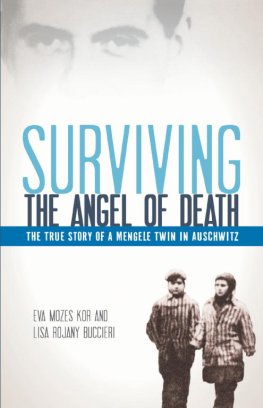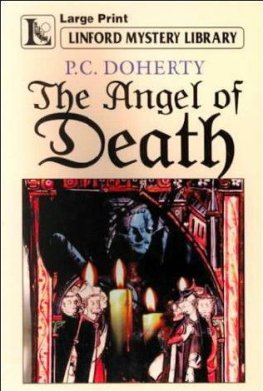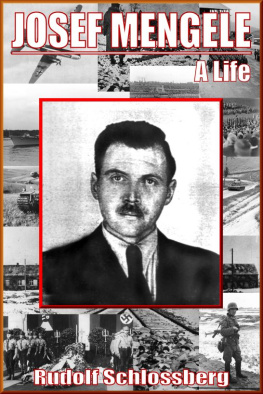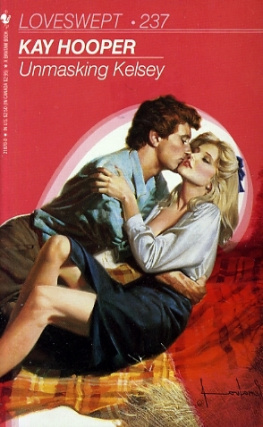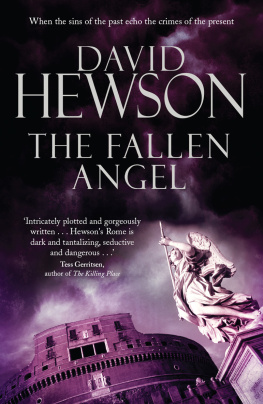David G. Marwell - Mengele: Unmasking the Angel of Death
Here you can read online David G. Marwell - Mengele: Unmasking the Angel of Death full text of the book (entire story) in english for free. Download pdf and epub, get meaning, cover and reviews about this ebook. year: 2019, publisher: W. W. Norton & Company, genre: Non-fiction. Description of the work, (preface) as well as reviews are available. Best literature library LitArk.com created for fans of good reading and offers a wide selection of genres:
Romance novel
Science fiction
Adventure
Detective
Science
History
Home and family
Prose
Art
Politics
Computer
Non-fiction
Religion
Business
Children
Humor
Choose a favorite category and find really read worthwhile books. Enjoy immersion in the world of imagination, feel the emotions of the characters or learn something new for yourself, make an fascinating discovery.

- Book:Mengele: Unmasking the Angel of Death
- Author:
- Publisher:W. W. Norton & Company
- Genre:
- Year:2019
- Rating:4 / 5
- Favourites:Add to favourites
- Your mark:
- 80
- 1
- 2
- 3
- 4
- 5
Mengele: Unmasking the Angel of Death: summary, description and annotation
We offer to read an annotation, description, summary or preface (depends on what the author of the book "Mengele: Unmasking the Angel of Death" wrote himself). If you haven't found the necessary information about the book — write in the comments, we will try to find it.
Mengele: Unmasking the Angel of Death — read online for free the complete book (whole text) full work
Below is the text of the book, divided by pages. System saving the place of the last page read, allows you to conveniently read the book "Mengele: Unmasking the Angel of Death" online for free, without having to search again every time where you left off. Put a bookmark, and you can go to the page where you finished reading at any time.
Font size:
Interval:
Bookmark:
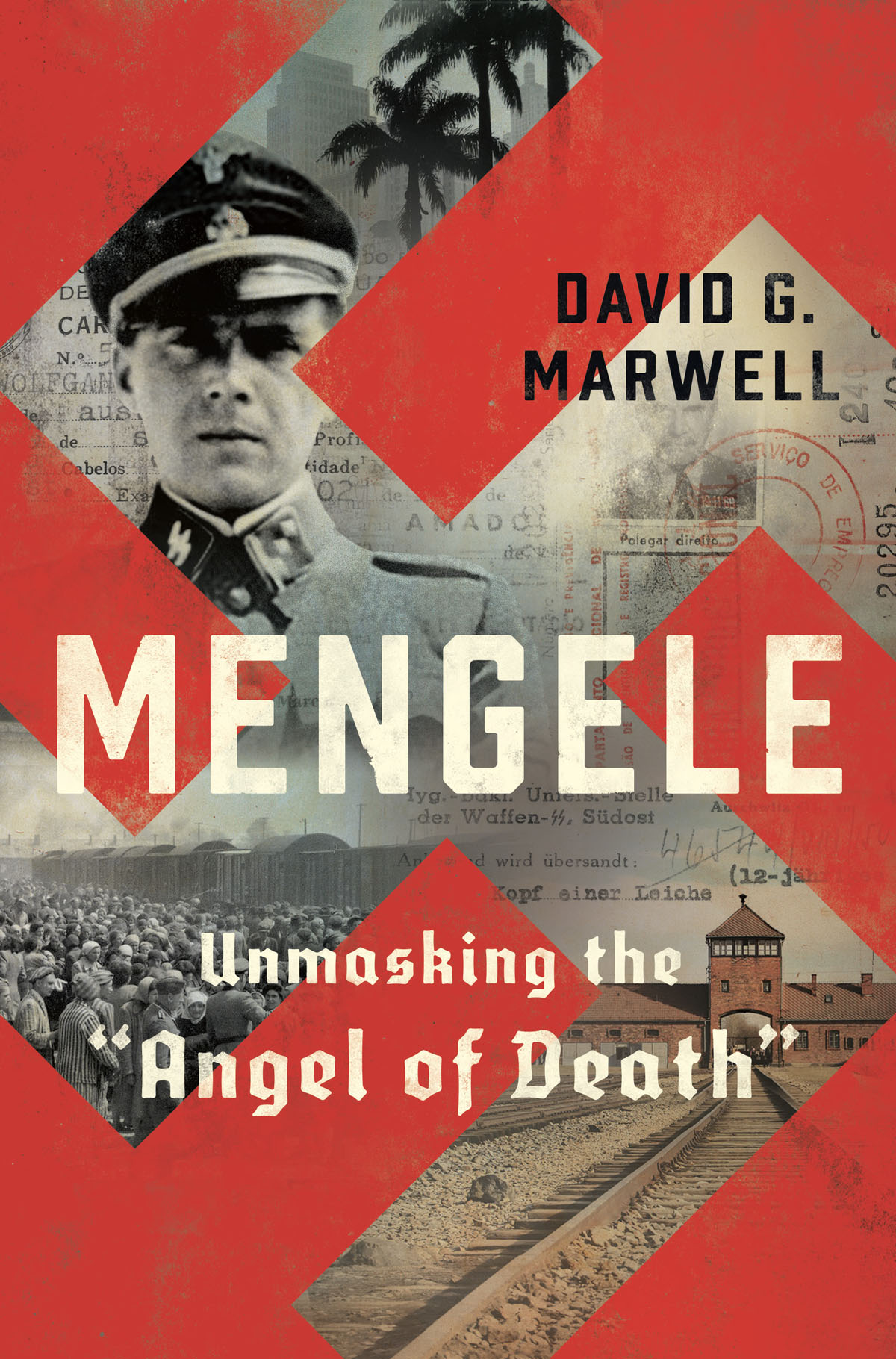
UNMASKING THE ANGEL OF DEATH
DAVID G. MARWELL

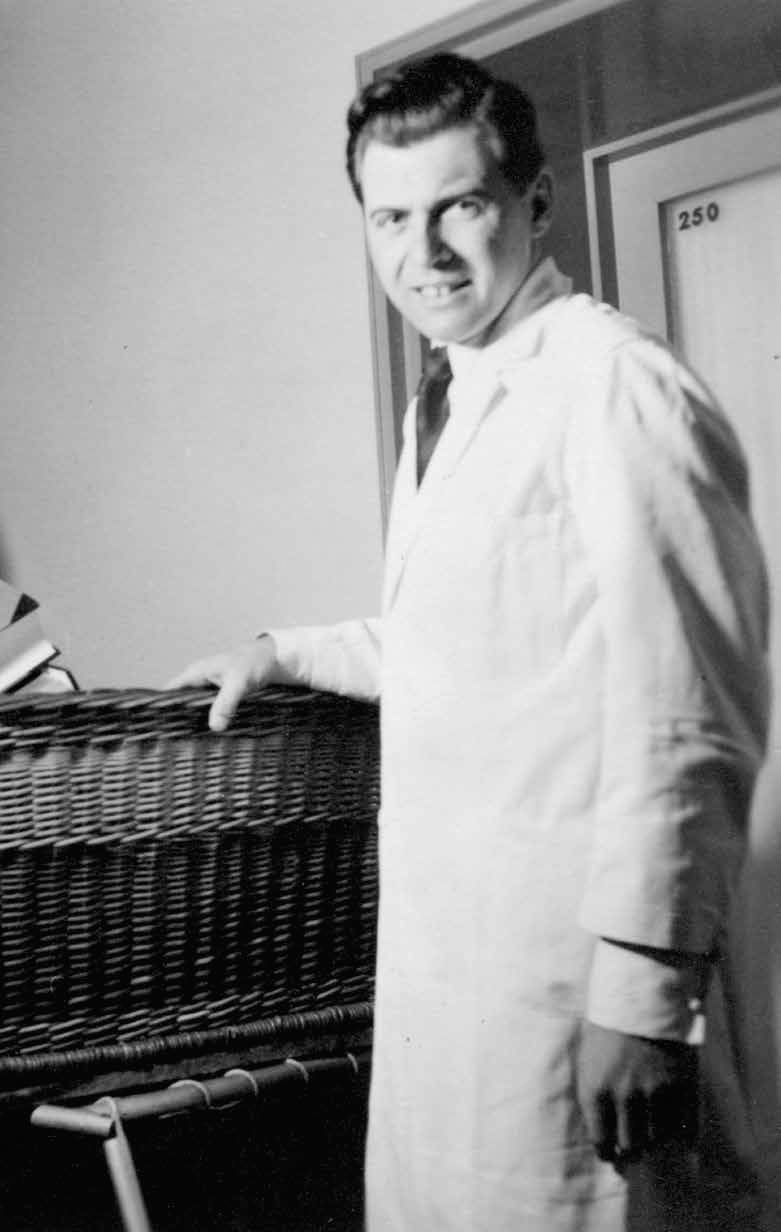
Mengele at Verschuers institute in Frankfurt, 193536. Archiv der Max-Planck-Gesellschaft, Berlin-Dahlem
Copyright 2020 by David G. Marwell
All rights reserved
First Edition
For information about permission to reproduce selections from this book, write to Permissions, W. W. Norton & Company, Inc., 500 Fifth Avenue, New York, NY 10110
For information about special discounts for bulk purchases, please contact W. W. Norton Special Sales at specialsales@wwnorton.com or 800-233-4830
Jacket design by Richard Ljoenes
Jacket photographs: (building with palm trees)
Paul Almasy / akg-Images; (passport photos) Betina Anton; (Mengele portrait) GTV / Shutterstock; (crowd and station) The Auschwitz Album / Yad Vashem - The World Holocaust Remembrance Center; (Auschwitz-Birkenau) Cavit Gencturk / Shutterstock
Book design by Chris Welch
Production manager: Beth Steidle
The Library of Congress has cataloged the printed edition as follows:
Names: Marwell, David George, author.
Title: Mengele : unmasking the Angel of Death / David G. Marwell.
Other titles: Unmasking the Angel of Death
Description: First edition. | New York, NY : W. W. Norton & Company, [2020] | Includes bibliographical references and index.
Identifiers: LCCN 2019033220 | ISBN 9780393609530 (hardcover) | ISBN 9780393609547 (epub)
Subjects: LCSH: Mengele, Josef, 19111979. | Waffen-SS. SS-Panzer-Division Wiking, 5. | War criminalsGermanyBiography. | Auschwitz (Concentration camp) | World War, 19391945AtrocitiesPoland. | PhysiciansGermanyBiography.
Classification: LCC DD247.M46 M37 2020 | DDC 940.53/18092 [B] dc23
LC record available at https://lccn.loc.gov/2019033220
W. W. Norton & Company, Inc., 500 Fifth Avenue, New York, N.Y. 10110
www.wwnorton.com
W. W. Norton & Company Ltd., 15 Carlisle Street, London W1D 3BS
TO THE MEMORY OF MY PARENTS
Edward M. Marwell
19222010
Grace Glass Marwell
19242013
W hile this book is based on both primary sources from archives throughout the world and the careful research of a host of brilliant scholars, it also relies on the writings of Mengele himself. I read his correspondence and diaries from his later life and was exposed to the intimate details of his health complaints, frustrations, and private reflections, and to the style and rhythm of his thoughts. In addition, I had access to Mengeles own attempt at the very enterprise in which I was engaged. Late in his life, he undertook to write his life story but chose to do so in the form of an autobiographical novel, which was to be about a man shaped in a very special way by his time. In a letter to his son, he accounted for this choice of genre by describing its advantages, which included:
The possibility of a more liberal treatment of difficult themes; the interchangeability of ones own experience and that of other people; the typifying of events and people of that time; the easier clarification of inner connections, causes, and processes; and finally, the displacement of an individual fate onto entire groups.
He believed that through this type of autofiction, which freed him from the bounds of literal truth, he could fashion from the raw material of his life a higher, perhaps more universal, message. For reasons related to security and protection, Mengele decided to fictionalize the names of individual characters and geographical locations. My challenge was to decipher his attempt at obfuscation and determine the real names of individuals and places that played key roles in his story. In doing so, my effort would complement Mengeles owndecoding what he had encoded. My success helped to clarify what he had sought to camouflage, making his autobiography an irreplaceable and invaluable source.
J osef Mengele was born on March 16, 1911, and died on February 7, 1979. At almost the exact midpoint of his life, in the summer of 1944, he spent long days and nights performing his duty on the ramp at the Auschwitz II concentration camp (Birkenau), sorting new arrivals and determining their fates. The Nazis massive effort to murder the Jews of Hungary, the last remaining Jewish community they targeted, was well under way, and a seemingly endless procession of railcars along the newly constructed spur was routed through the main gate and into the heart of the camp, before coming to a stop a short distance from the gas chambers. Completed a few months earlier, this new entrance replaced an inefficient receiving ramp that had been located between the main Auschwitz camp and Birkenau and considerably simplified the unloading and processing of the doomed, disoriented passengers packed into the airless freight cars they had entered days before in Hungary. The camp had reached its zenith, operating at full capacity; between the end of April and late July, nearly 430,000 Hungarian Jews were deported there, the overwhelming majority murdered upon arrival. It could be said that Mengele himself had reached a similar high point in his life.
Were it possible to look into his mind, I imagine it would reveal enormous satisfaction in the path his life had taken. At a young ageonly thirty-threehe stood on the cusp of great success. His own study and preparation and hard work had brought him to an unprecedented place in the pursuit of the science that was his consuming passion. As he no doubt saw it, no one in history had had access to the raw material that stood before him or had been so liberated from the restraints that tamed ambition and limited scientific progress.
If the first half of Josef Mengeles life had seen a steady accretion of successes that led to that moment, the second half would see the dismantling of all he had achieved. The Third Reich would be driven, by that summer, from the farthest extent of its advancing empire back toward where it had begun. In the next months it would contract further, like a black hole folding in on itself. At the same time, Josef Mengele, once near the center of a brave new world, was moved increasingly to the margins. He saw the prospects for a promising future diminish, as everything that mattered to him moved beyond his reach.
As this process of dismantling was taking place, a complementary process began that would see his reputation grow to nearly mythical heights: to the world, he would become both the personification of the movement that so animated him and the most notorious author of its crimes. Referred to by some as the Angel of Death, Mengele became a well-known character in popular culture and stalked the nightmares and haunted the daydreams of legions. At some point, he emerged as the embodiment not only of the Holocaust itself but also of the failure of justice in the wake of the wara persona that helped to obscure any chance of our understanding who this man really was and what motivated him.
In February 1985, while working in the Office of Special Investigations (OSI) at the U.S. Department of Justice, I was assigned to the international investigation to locate Mengele and bring him before a court of law. Established in 1979 through legislation sponsored by Elizabeth Holtzman, a pugnacious and passionate congresswoman from New York, OSI had replaced an anemic effort to investigate Nazi war criminals living in the United States that had previously been housed in the Immigration and Naturalization Service. The new legislation not only created OSI but placed it in the criminal division of the Justice Department, provided it with a healthy budget, and supplied a legal framework under which Nazi criminals could be prosecuted for immigration fraud tied to their having misrepresented their backgrounds and their participation in Nazi persecution.
Font size:
Interval:
Bookmark:
Similar books «Mengele: Unmasking the Angel of Death»
Look at similar books to Mengele: Unmasking the Angel of Death. We have selected literature similar in name and meaning in the hope of providing readers with more options to find new, interesting, not yet read works.
Discussion, reviews of the book Mengele: Unmasking the Angel of Death and just readers' own opinions. Leave your comments, write what you think about the work, its meaning or the main characters. Specify what exactly you liked and what you didn't like, and why you think so.


